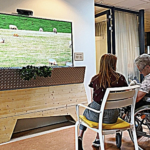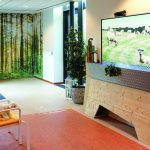Jing Li, Emilia Barakova, Jun Hu, Wouter Staal & Martine van Dongen-Boomsma
See also the related Patent: https://patents.google.com/patent/NL2029559B1/en?oq=NL2029559B1

Children with Autism Spectrum disorder (ASD) often experience high levels of anxiety and stress. Many children with ASD have difficulty in being aware of their stress and communicating distress to family and caregivers. Stress detection and regulation are vital for their mental well-being. This paper presents a stress-aware pen (ApEn) that detects real-time stress-related behaviors and interacts with users with vibrotactile and light as a feedback indication of interpreted stress levels. ApEn is a context-aware tool for collecting behavioral data related to the expression of stress and can increase users’ stress awareness. A pilot test was conducted with typical developed children to investigate how to detect stress in their daily environment. The pilot test results indicate that ApEn is a promising tool for detecting stress-related behaviors and can attend the user about the detected stress through designed sensory feedback.








